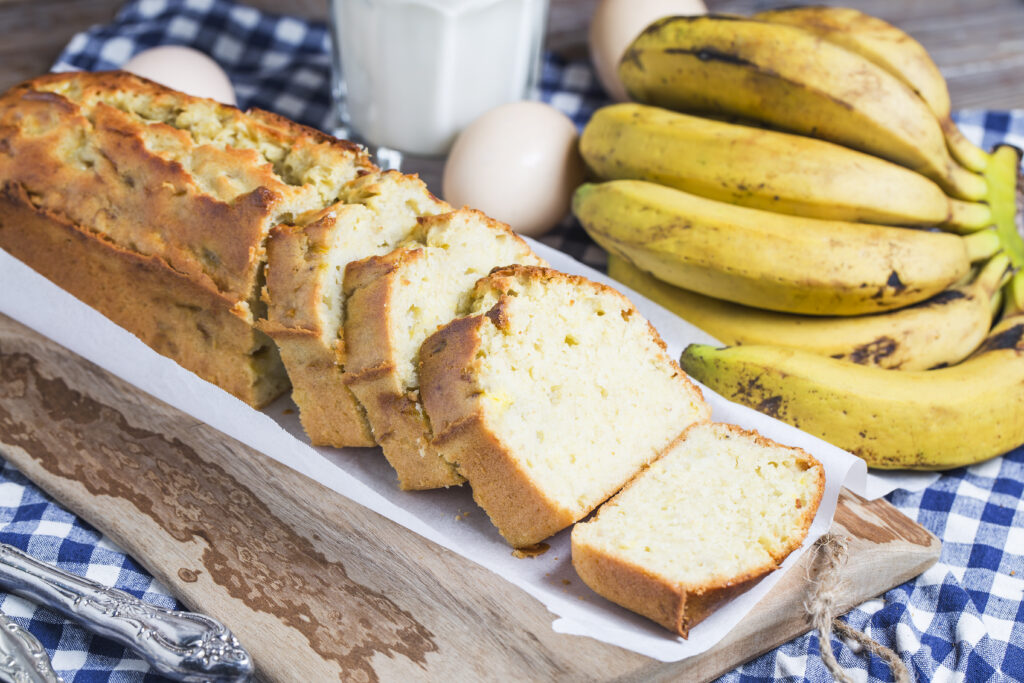Banana bread is a comfort food favorite for many, but nothing is more disappointing than slicing into a loaf and finding it dense and heavy instead of light and fluffy. If you’ve ever asked yourself, “Why is my banana bread dense and not fluffy?”, this guide will help you understand the reasons and how to fix them.

For creative variations, check out the Fage Banana Bread Recipe, which ensures the perfect texture every time.
Common Causes: Why Is My Banana Bread Dense and Heavy?
1. Overmixing the Batter: A Common Mistake
One of the leading reasons your banana bread is dense and not fluffy is overmixing. Stirring the batter too much activates the gluten in the flour, resulting in a chewy and heavy loaf.
How to Avoid Overmixing
- Combine wet and dry ingredients separately before folding them gently together.
- Stop mixing as soon as you no longer see streaks of flour.
- Avoid using an electric mixer, which tends to overwork the batter.
For more mixing tips, check out this article on baking mistakes.
2. Incorrect Ingredient Ratios: Too Much or Too Little
Using incorrect measurements for wet and dry ingredients can cause banana bread to turn out dense or overly moist. This imbalance is one of the main reasons why banana bread turns dense instead of fluffy.
Tips for Balancing Ingredients
- Use the spoon-and-level method to measure flour accurately.
- Follow a tested recipe like the Fage Banana Bread Recipe to ensure the right balance of bananas, flour, and liquid.
3. Using Old or Insufficient Leavening Agents
If your baking soda or baking powder is expired, the bread won’t rise properly. This often results in a loaf that is flat and dense, leaving bakers wondering, “Why is my banana bread not fluffy?”
How to Test Your Leavening Agents
- Add a small amount of baking soda to vinegar or baking powder to water. If it fizzes, it’s still good.
- Ensure you use the correct measurements: typically, 1 teaspoon of baking soda per cup of flour.
For additional tips on leavening agents, visit this troubleshooting guide.
How to Fix Dense Banana Bread and Make It Fluffy
If you’re asking yourself, “How do I make my banana bread less dense?”, these solutions can help.
1. Mix the Batter Gently for a Fluffier Texture
The key to preventing dense banana bread lies in how you mix the batter. Overmixing, as discussed earlier, can eliminate air pockets, making the bread heavy.
2. Use the Right Bananas for Moist, Fluffy Bread
Banana ripeness plays a significant role in achieving the perfect texture. Overripe bananas with brown spots provide the ideal balance of sweetness and moisture for light, airy bread.
3. Bake at the Right Temperature to Avoid Dense Results
Uneven temperatures can cause your bread to cook improperly. Preheat your oven to 350°F (175°C) and use an oven thermometer to ensure accuracy. Avoid opening the oven door while baking, as this can cause the loaf to sink.
FAQs About Why Banana Bread Is Dense and Not Fluffy
1. Why Is My Banana Bread Dense and Gummy?
A gummy texture often occurs when the batter contains too much moisture or is underbaked. Use a toothpick to check for doneness—it should come out clean or with a few moist crumbs.
2. How Do I Make My Banana Bread Rise and Stay Fluffy?
To make banana bread rise properly, ensure your baking soda or baking powder is fresh. Additionally, fold the batter gently to avoid overmixing.
3. Can Greek Yogurt Prevent Dense Banana Bread?
Yes! Greek yogurt can add moisture and richness without making the bread dense. Learn how to use it in this guide.
Conclusion
Why is my banana bread dense and not fluffy? The answer lies in mixing techniques, accurate ingredient measurements, and the freshness of your leavening agents. By following these tips and referencing reliable recipes like the Fage Banana Bread Recipe, you can ensure your banana bread turns out light, fluffy, and delicious every time.
For more baking inspiration, visit the Recipes Mint Homepage and explore additional guides and tips.
